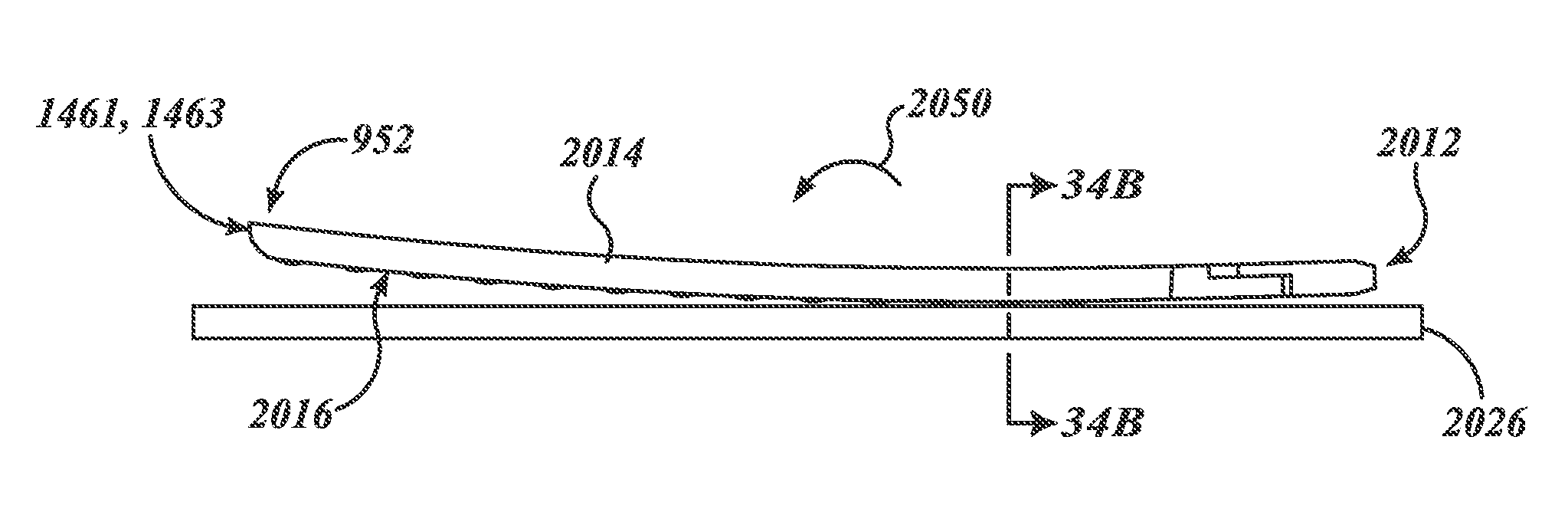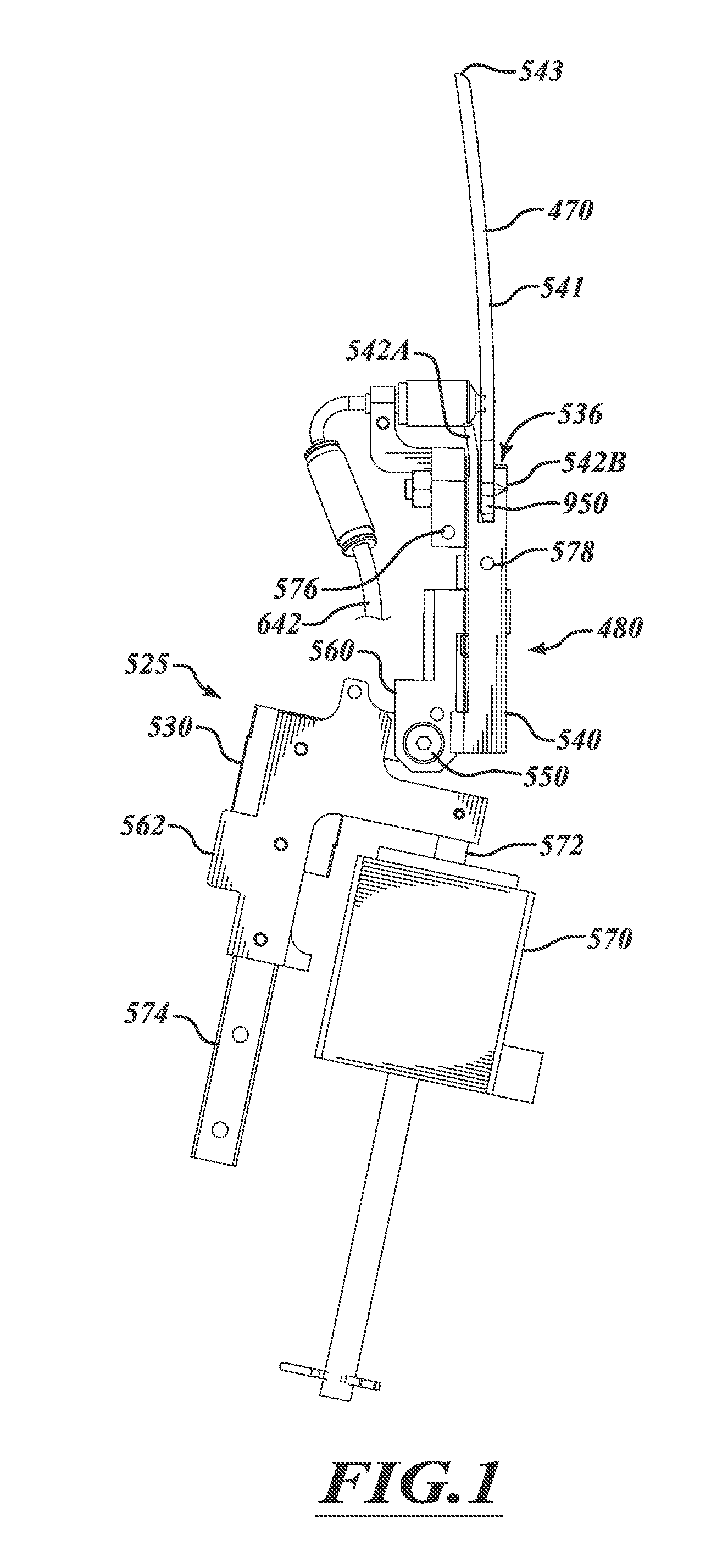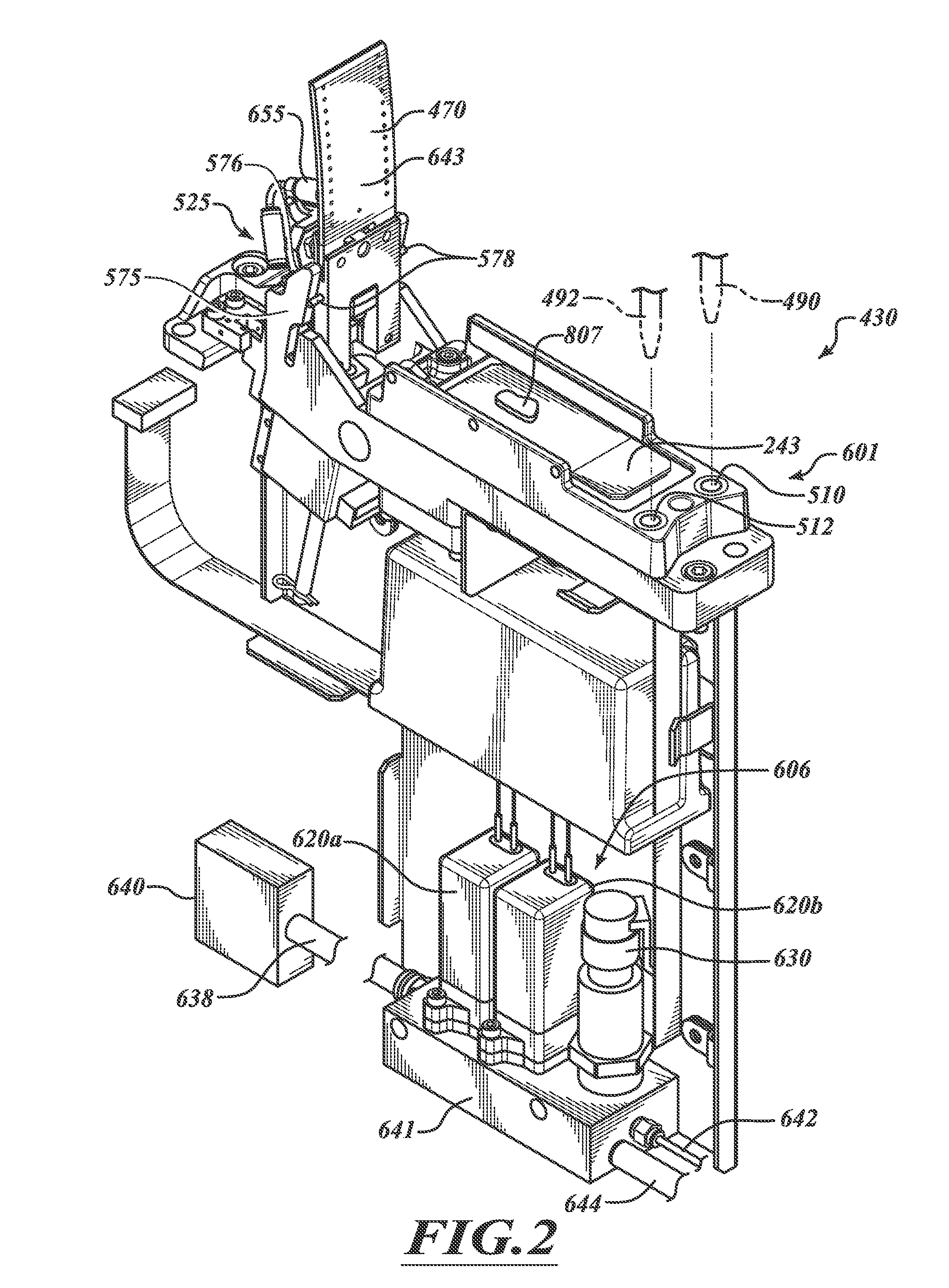Opposables and automated specimen processing systems with opposables
a technology of automatic specimen processing and opposables, which is applied in the field of systems for treating specimens carried on microscope slides, can solve the problems of contamination and degradation of processing liquids, contamination of other slides in liquid baths, and inconsistent processing
- Summary
- Abstract
- Description
- Claims
- Application Information
AI Technical Summary
Benefits of technology
Problems solved by technology
Method used
Image
Examples
Embodiment Construction
[0112]FIG. 1 shows an opposable actuator 525 that includes an opposable receiver 480 and a drive mechanism 530. The opposable receiver 480 holds an opoposable 470 that can be used to manipulate and direct a series of liquids to a specimen. The opposable receiver 480 can include a clamp 536 and a main body 540. The clamp 536 includes a pair of jaws 542A, 542B that cooperate to hold a mounting end 950 of the opposable 470. The opposable 470 includes a main body 541 extending to a captivating end 543. The main body 541 is pivotally coupled to the drive mechanism 530 by a pivot 550. The drive mechanism 530 can include a linkage assembly 560 and a linear actuator assembly 562. The linkage assembly 560 includes the pivot 550, which allows rotation about one or more axes of rotation (e.g., two axes of rotation) and can include one or more roller ball bearings, pivots, hinges, or other features that provide desired motion. The linear actuator assembly 562 can include an energizable drive de...
PUM
 Login to View More
Login to View More Abstract
Description
Claims
Application Information
 Login to View More
Login to View More - R&D
- Intellectual Property
- Life Sciences
- Materials
- Tech Scout
- Unparalleled Data Quality
- Higher Quality Content
- 60% Fewer Hallucinations
Browse by: Latest US Patents, China's latest patents, Technical Efficacy Thesaurus, Application Domain, Technology Topic, Popular Technical Reports.
© 2025 PatSnap. All rights reserved.Legal|Privacy policy|Modern Slavery Act Transparency Statement|Sitemap|About US| Contact US: help@patsnap.com



